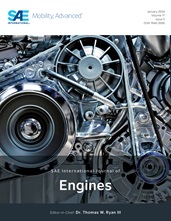The gasoline direct injection (GDI) engine particulate emission sources are assessed under cold start conditions: the fast idle and speed/load combinations representative of the 1st acceleration in the US FTP. The focus is on the accumulation mode particle number (PN) emission. The sources are non-fuel, combustion of the premixed charge, and liquid fuel film. The non-fuel emissions are measured by operating the engine with premixed methane/air or hydrogen/air. Then the PN level is substantially lower than what is obtained with normal GDI operation; thus non-fuel contribution to PN is small. When operating with stoichiometric premixed gasoline/air, the PN level is comparable to the non-fuel level; thus premixed-stoichiometric mixture combustion does not significantly generate particulates. For fuel rich premixed gasoline/air, PN increases dramatically when lambda is less than 0.7 to 0.8. This lambda threshold does not correlate with engine speed and load; however, it increases slightly when the intake air is diluted with nitrogen. To assess the fraction of the GDI injected fuel that contributes to the PN, at fixed load and lambda, the injected gasoline is systematically reduced, with premixed methane as balance for the fuel. It is found that only a small fraction of the injected fuel contributes to the PM emissions. The fraction is dependent on the fuel amount and the rigor of the mixing process; hence it is dependent on speed, load, and timing of the injection.
